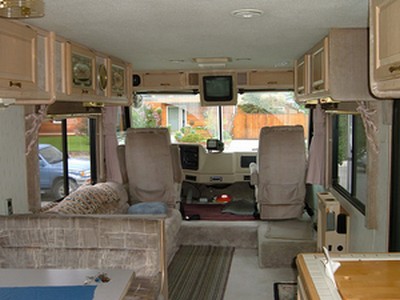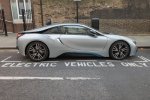Turn My Big RV Into a Plug-In Hybrid?
by Vernon
(Cleveland, Tn)

Hybrid RV Wannabe?
I've got a 31 Ft RV that gets 8.5 mpg.
Would an AC electric motor or 2 in conjunction with the 8.1 liter gas engine increase the gas mileage in an RV?
Hi, Vernon -
This is a really good idea, bordering on brilliant.
I recently spoke with Dennis Bieschke from NetGain Technologies (the same company that makes the high-quality "WarP" and "TransWarP" DC electric car motors), about a new product NetGain's developed called the Electric Assist System, or EAS. It includes an appropriate EV motor, a computer interface called EMIS, and a battery pack, and it turns large gas-hogs into plug-in hybrids, increasing the gas mileage by 26 percent or more. Sounds like just what you wanted!
In fact, the worse the gas mileage originally, the more the electric motor assistance will improve it. It was originally designed for those medium-sized delivery trucks that run all over town getting 10 mpg, burning up money and carbonating the atmosphere; )
Good news: It doesn't cost much to convert (around 7 thousand dollars) and it doesn't take much time, either (about one day of shop time).
A couple of things to say about this, though; first, the EMIS talks to your vehicle's computers to decide when to apply the electric motor assistance. If you've got an older RV (pre-1996), that's not currently possible with their EAS, so you'd have to configure something yourself. Second, the electric motor needs somewhere to live along the drive train, and rear wheel drive vehicles seem to have the most room to do that. Other drive configurations are in the works, but not yet developed.
It's no secret that I like the AC motor, for big vehicles especially, but I would think that a DC motor might work a little better for this purpose (that's what NetGain's using), because of the "instant torque" factor. I may be wrong, though.
Anybody else wanna jump in, here?
Regards,
Lynne


